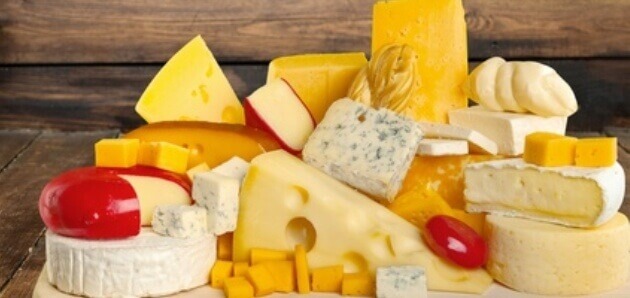
Is moldy cheese safe to eat? It's a common question and the answer depends on the type of cheese. Based on guidelines from the U.S. Department of Agriculture, here's a rundown on the cheeses you can keep (and those you should toss) when mold appears.
Examples: Cheddar, Swiss, Muenster, Monterey Jack, Parmesan, Colby, Gouda, Asiago, Edam, Brick, Havarti, Jarlsberg
Safe to eat when mold appears? Yes
Cut away at least 1 inch around and below the moldy area (do not touch mold with the knife) and re-cover the cheese in fresh wrap.
It’s safe to eat hard and semisoft cheeses that have mold on them — after first cutting away the mold — because the mold cannot penetrate too deeply into the cheese.
Safe to eat when mold appears? No
The entire package should be discarded.
It is not safe to eat shredded, sliced or crumbled cheese of any type — including hard or semisoft — that has become moldy. The mold could have easily spread throughout the entire package of cheese, even if doesn’t appear obvious.
Examples: Cream cheese, cottage cheese, ricotta cheese
Safe to eat when mold appears? No
It is not safe to soft cheeses that have developed mold, as the mold can readily spread below the surface of these cheeses.
Some soft cheeses, like Camembert and Brie, have a rind that contains a type of mold that is not harmful and is safe to eat. But if additional mold develops on these types of soft cheeses (in other words, mold that was not a normal part of the manufacturing process) you should discard them entirely.
See Also: